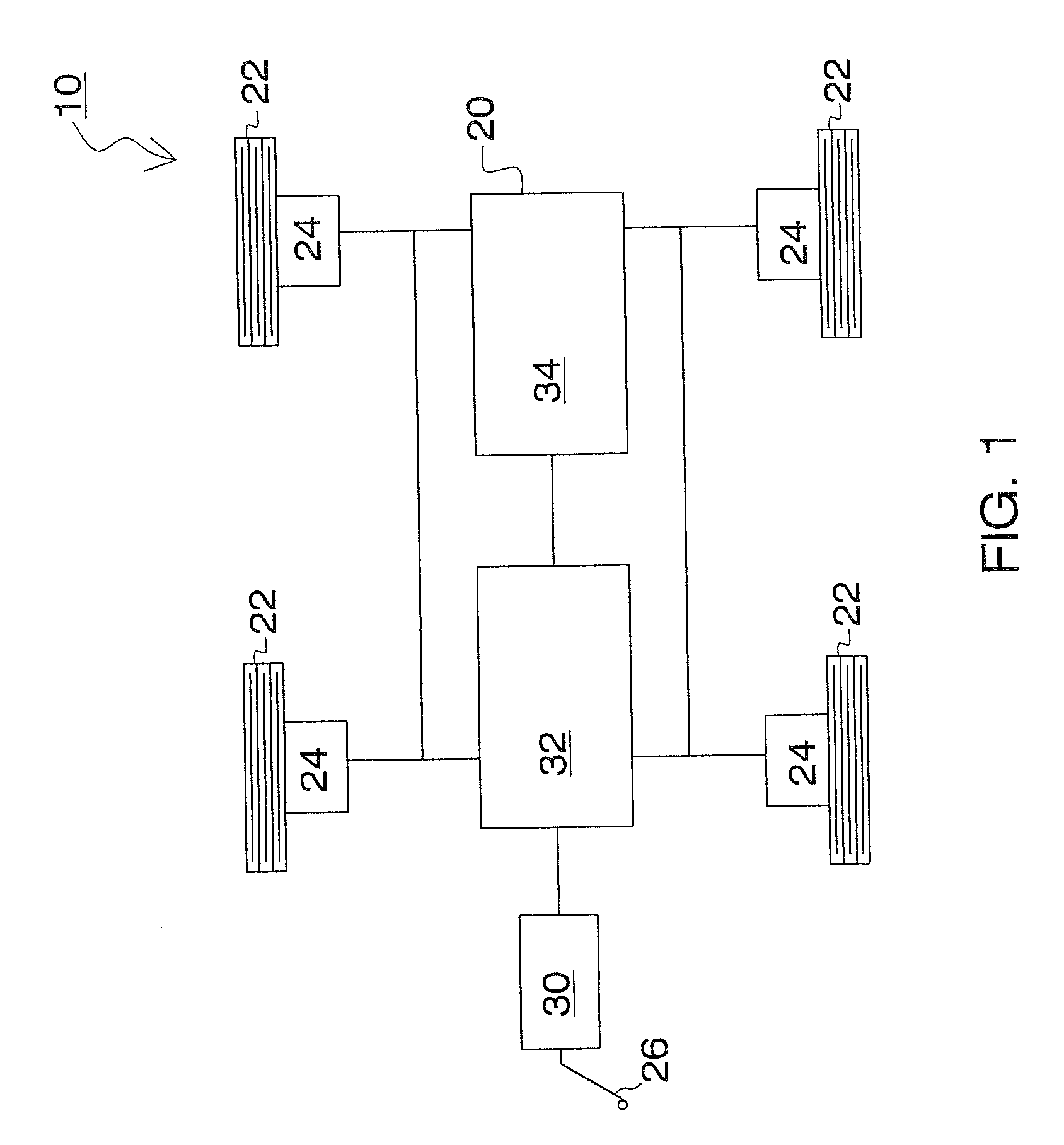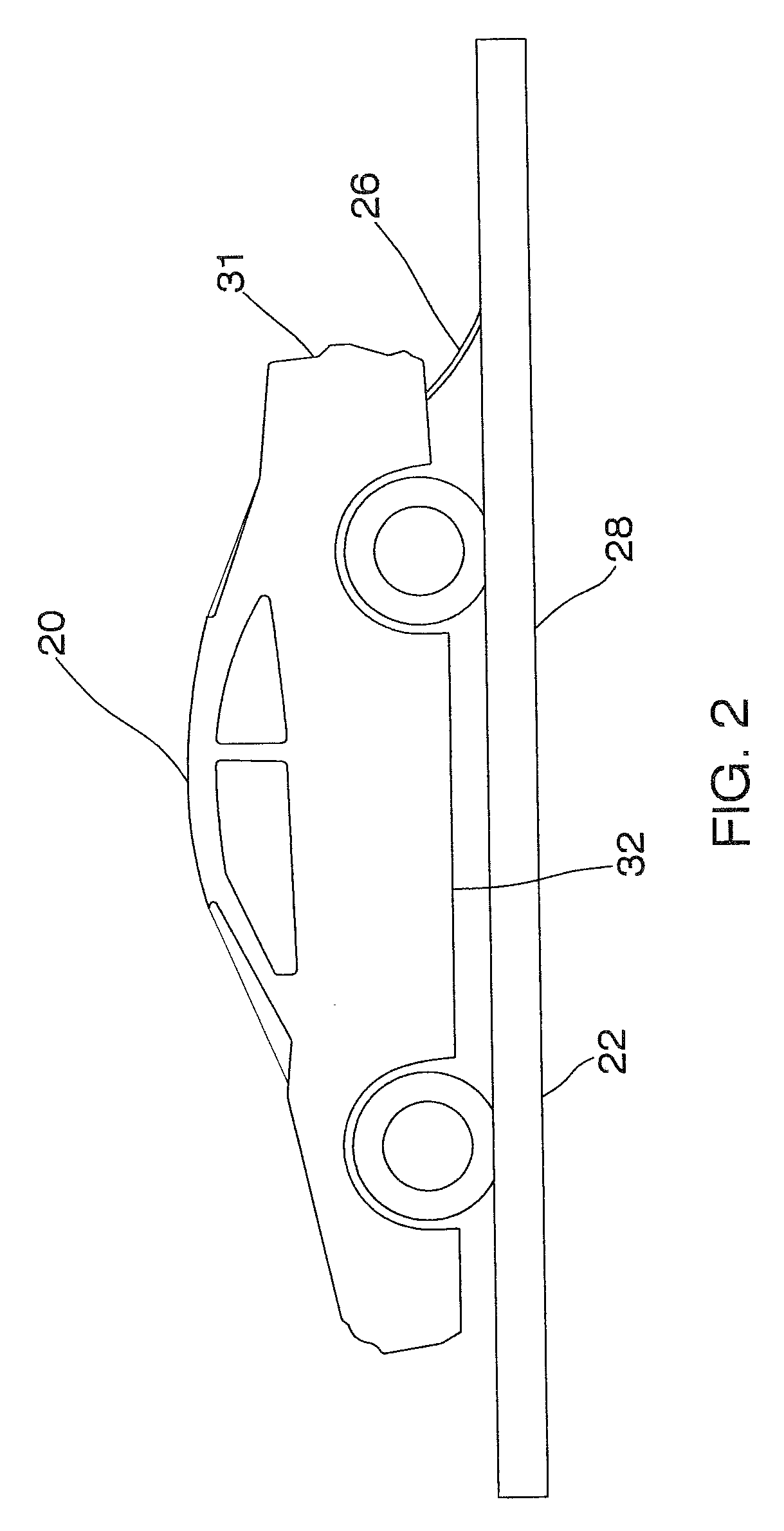Method and Apparatus for Protecting Charging Devices from Surges and Lightening Strikes
a charging device and surge protection technology, applied in the direction of electric devices, propulsion parts, emergency power supply arrangements, etc., can solve the problems of major obstacles, damage to both the attached vehicles and the transformer system, and serious problems in all the referenced systems
- Summary
- Abstract
- Description
- Claims
- Application Information
AI Technical Summary
Benefits of technology
Problems solved by technology
Method used
Image
Examples
Embodiment Construction
[0031]The present invention relates to a method and apparatus for charging electrically powered devices. In accordance with the invention, the device is powered by two storage or charge receiving devices. One of these devices is capable of receiving a substantial charge very rapidly while the other device requires a longer time to receive a charge. The advantage is that the powered device can be used almost instantly and continually while at the same time rebuilding electrical charge. The present invention further relates to a system for protecting the charging device from being damaged from an electrical surge, such as from a lightening strike.
Electric Vehicles and Charging Stations
[0032]FIG. 1 is a schematic diagram illustrating the various components of the primary embodiment 10 of the present invention. As illustrated, the invention relates to a vehicle 20 that includes four independently operating wheels 22. In the preferred embodiment, these wheels are each powered by independ...
PUM
 Login to View More
Login to View More Abstract
Description
Claims
Application Information
 Login to View More
Login to View More - R&D
- Intellectual Property
- Life Sciences
- Materials
- Tech Scout
- Unparalleled Data Quality
- Higher Quality Content
- 60% Fewer Hallucinations
Browse by: Latest US Patents, China's latest patents, Technical Efficacy Thesaurus, Application Domain, Technology Topic, Popular Technical Reports.
© 2025 PatSnap. All rights reserved.Legal|Privacy policy|Modern Slavery Act Transparency Statement|Sitemap|About US| Contact US: help@patsnap.com



